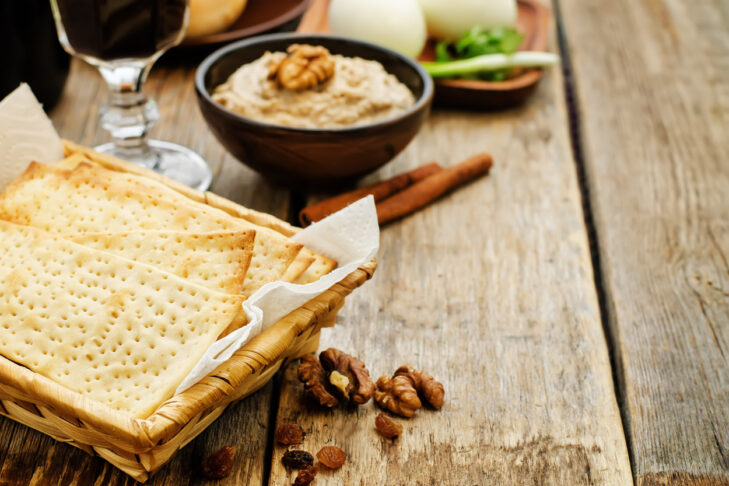I was initially going to call this diary entry “The 11th Plague.” But that felt too doom and gloom, too easy and snarky. Yes, we’re in the midst of a global pandemic—something we haven’t experienced in our lifetimes. But most of us reading this are safe and hopefully healthy in our homes. I like a meme going around that says, “We’re not stuck in our homes; we’re safe in our homes.” And as one of my friends told me, she’s thinking of this time as a “great Shabbat-like pause.”
Amid all this mayhem, we’ll welcome Passover 2020/5780. This year’s seders will morph into virtual ones. Holiday tables will have empty places. Just as the untouched place setting for Elijah is a harbinger of the Messiah at the seder table, so are our missing relatives and friends harbingers of better times. Today, they are missing. Tomorrow, we will be reunited.
Passover is my favorite holiday, and it was especially so when I was a child. I think back to the days when my extended family crammed into my grandmother’s apartment, and it was still expansive. My abuela, as I called her, cooked a full complement of food, including bourekas made with matzah meal, charoset made with raisins and wine and, since we are Sephardic, bowls of fluffy rice to go with the lentils we ate.
In some ways Passover was among the most American of holidays that my Cuban family celebrated. Though my grandparents didn’t know English, our table was still set with the Maxwell House Haggadah. We didn’t read from the Haggadah so much as use it as a roadmap for the seder—a word that means “order.” My grandfather, or abuelo, modified the Haggadah in Ladino and Spanish.
Related
This year, the inherent anxiety that begins the Passover story is ever-present in the pandemic, which we’re desperately trying to sidestep. Again, resist thinking of COVID-19 as another plague. But how can we not overlay the Exodus story onto this coronavirus narrative? Is this a prelude to a new world? Once we emerge from self-isolation, how will the Passover holiday be changed? This holiday is different from all others in that food is linked to ritual, and ritual is the gateway to remembering the Exodus as if we ourselves experienced it. It doesn’t get more virtual than that.
I’m hesitant to describe myself as living inside a plague because the world in general, and the Jewish people specifically, have lived under much more horrible conditions. This morning I read an affecting opinion piece in The New York Times by Tablet Magazine editor-in-chief Alana Newhouse. She writes, “…I’ve come to think of Passover as the stem cell of the Jewish people, a reserve of core source material with the proven ability to generate new meaning and solace in circumstances even more extreme than what we are living through now.”
In her piece, Newhouse also focuses on a black-and-white picture of people secretly baking matzo in the Lodz Ghetto in 1943. As she points out, there were Jews in bondage once again celebrating their ancient liberation from Egypt. It’s too easy to say that the image is ironic. To me, these Jews recall our shared history, our texts and our liturgy to sustain us in the direst of times. In the picture, one of the women is smiling broadly at the camera. She is reclaiming Passover and the primal joy of freedom.
In that spirit, I will rescue the memories of Passover seders in my abuela’s apartment. When my mother and aunt recited a song in the middle of the seder, it was a virtual parting of sorts. Although they only remember fragments of what they sang so loudly and clearly in Ladino, it still resonates as a comprehensive message: Todos que tengan hambre venga y coma. Este año aquí, el año invieñendo en tierra santa.
“Let all who are hungry come and eat. This year we are here; in the coming year we will be on sacred land.” That sample of hope overrides thoughts of an 11th plague. And remember that meme—we’re not stuck at home; we’re safe at home.
For more, read “The Coronavirus Diaries, Part 1: On Hand Washing” and “The Coronavirus Diaries, Part 2: Worshipping Alone Together.”





